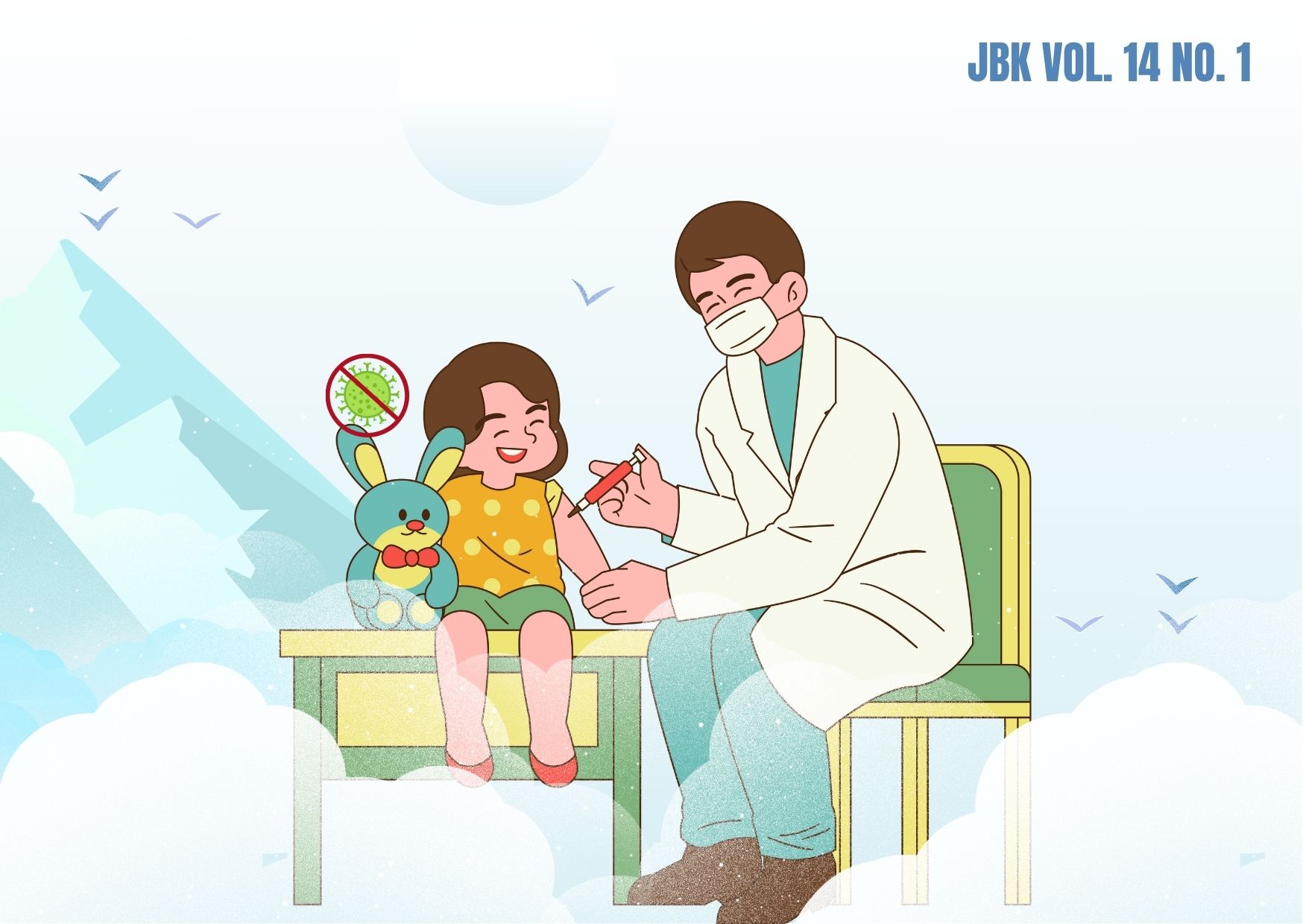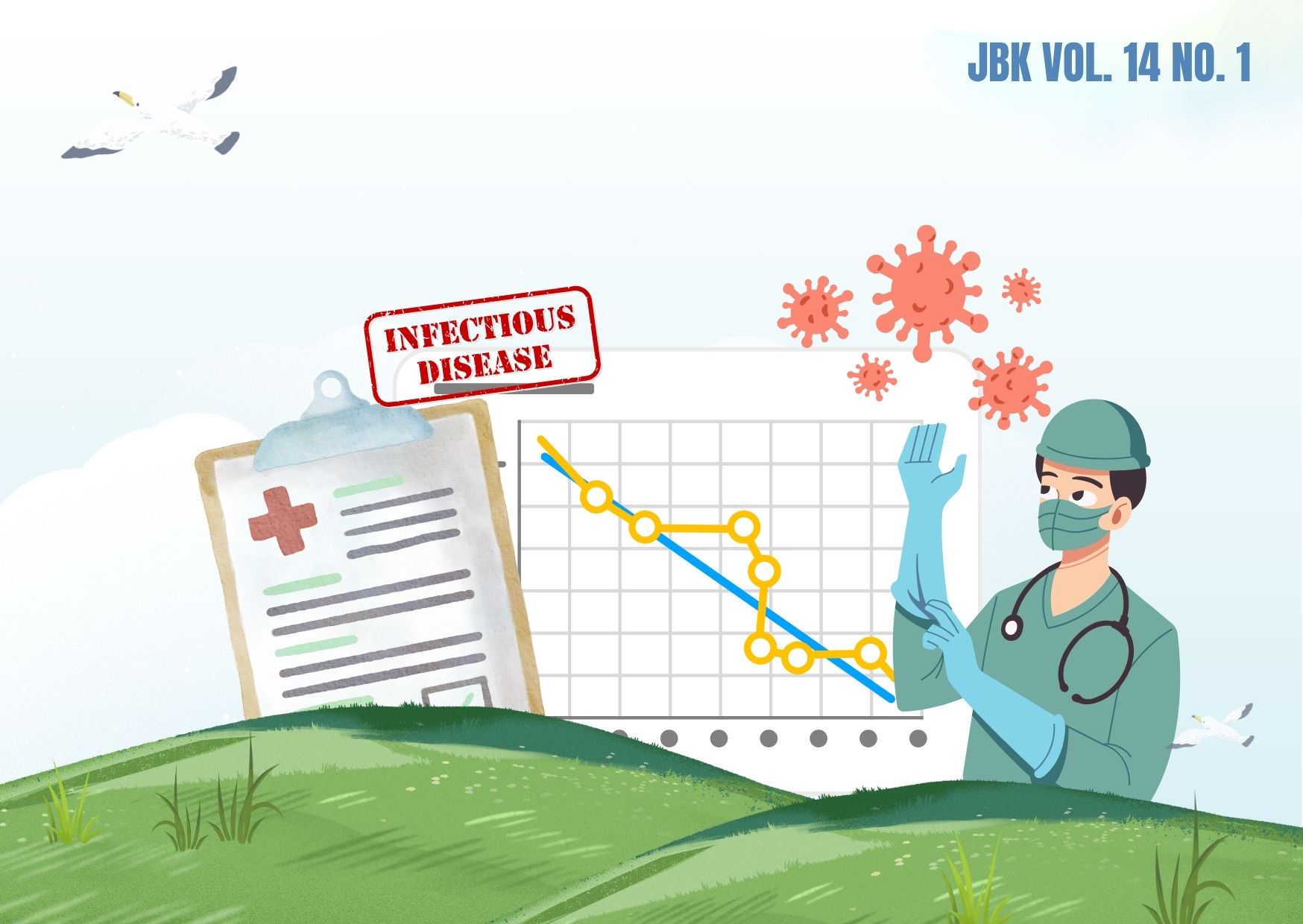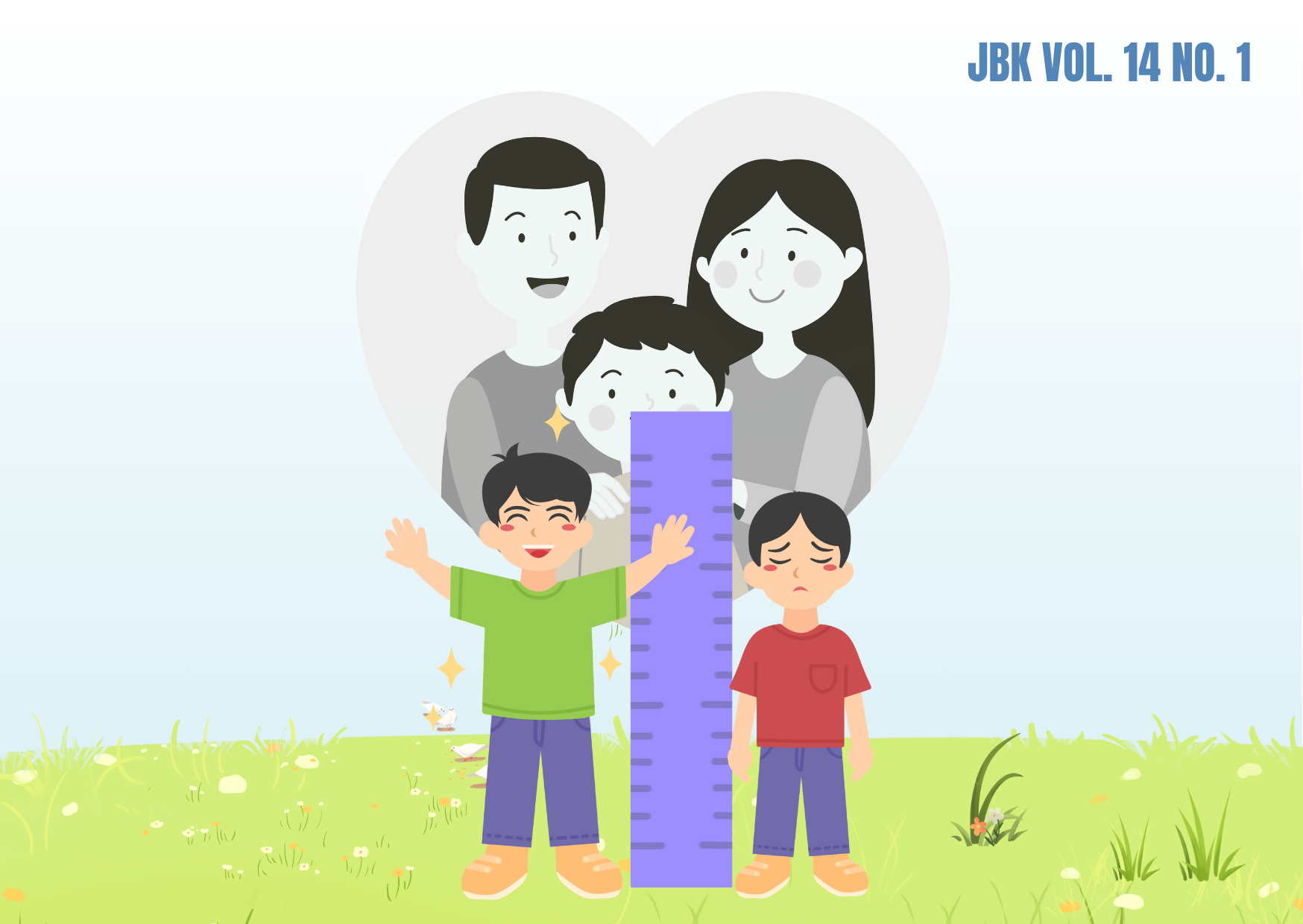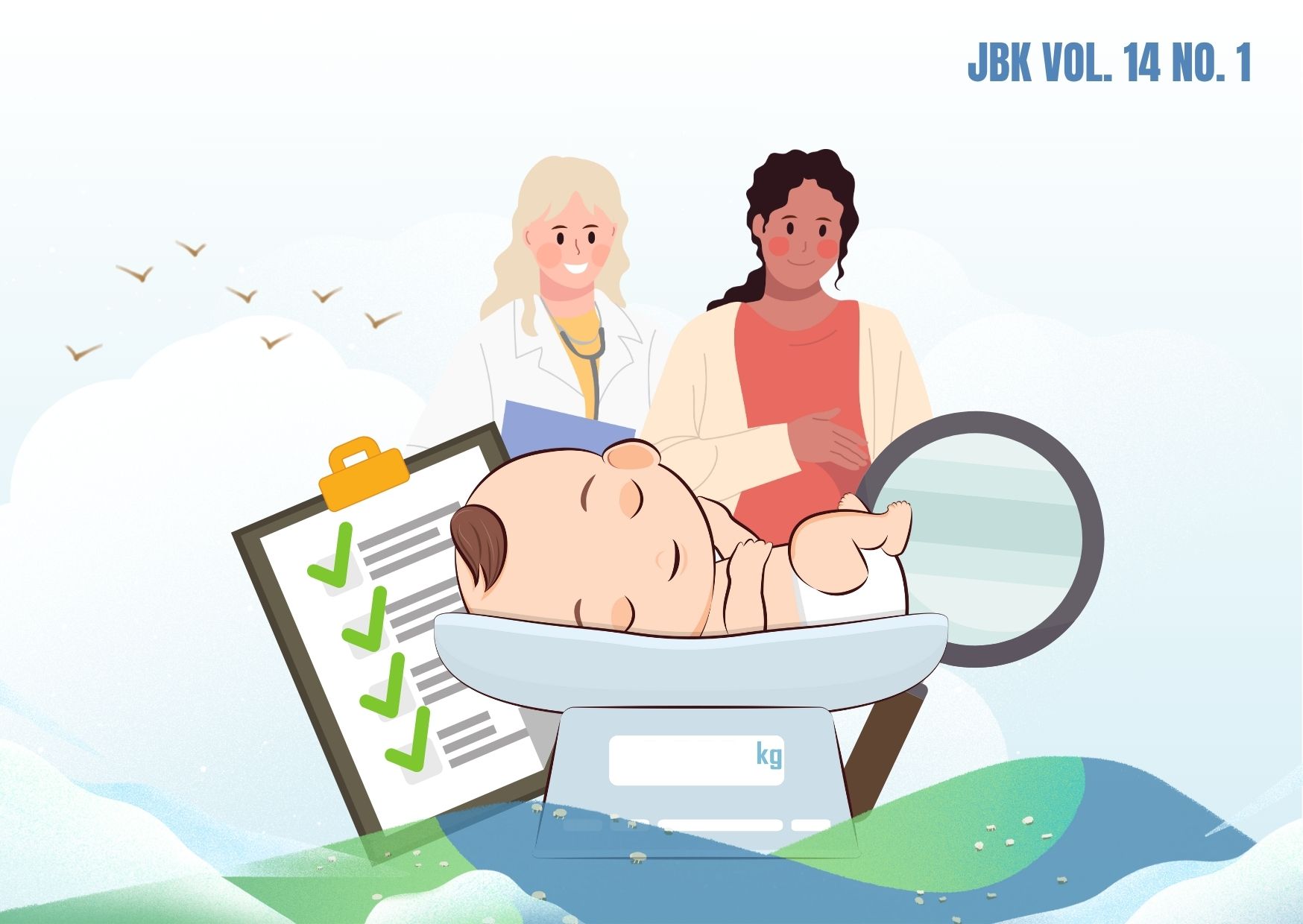RURAL-URBAN DISPARITIES IN DETERMINANTS OF BCG IMMUNIZATION COVERAGE FOR CHILDREN AGED 0-3 MONTHS IN INDONESIA

Downloads
Bacillus Calmette–Guérin (BCG) immunization plays a crucial role in preventing tuberculosis, especially in developing countries like Indonesia. Its coverage is influenced by various factors that differ between urban and rural areas. This study aimed to identify factors associated with BCG immunization among infants aged 0–3 months in urban and rural Indonesia. This study used data from the 2017 Indonesia Demographic and Health Survey (IDHS), including 562 rural and 476 urban respondents. Variables analyzed included maternal age, education, household wealth, contraceptive use, and ANC visits. Chi-square tests and multiple logistic regression were conducted separately for urban and rural areas. The findings showed that 64.2% of urban and 48.7% of rural children received BCG immunization. In rural areas, children from the richest households were more likely to be immunized compared to those from the poorest households (OR = 2.29; 95%CI = 1.1–4.6). Children of mothers with higher education in urban areas were more likely to receive BCG compared to those with lower education (OR = 3.43; 95%CI = 1.3–9.0), as were those with secondary education (OR = 2.28; 95%CI = 1.1–4.4). Mothers who used contraception were also more likely to immunize their children compared to those who did not (OR = 2.71; 95%CI = 1.5–4.8). BCG coverage remains lower in rural communities. Improving coverage requires expanding access to health services in rural areas and strengthening education and contraceptive programs in urban settings.
WHO. Tuberculosis. 2020; Available from: https://www.who.int/health-topics/tuberculosis#tab=tab_1
WHO. Global tuberculosis report 2023 [Internet]. 2023. Available from: https://www.who.int/publications/i/item/9789240083851
WHO. Tuberculosis [Internet]. 2022. Available from: https://www.who.int/indonesia/news/campaign/tb-day-2022/fact-sheets
Indonesia Ministry of Health. Laporan Program Penanggulangan Tuberkulosis Tahun 2022 [Internet]. 2024. Available from: https://www.tbindonesia.or.id/pustaka---program-la/laporan-program-penanggulangan-tuberkulosis-tahun-2022/
Indonesia Ministry of Health. Peraturan Menteri Kesehatan Nomor 67 Tahun 2016 tentang Penanggulangan Tuberkulosis [Internet]. 2016. Available from: https://peraturan.bpk.go.id/Details/114486/permenkes-no-67-tahun-2016
Kementerian Pemberdayaan Perempuan dan perlindungan anak RI. Profil Anak Indonesia 2019 [Internet]. 2019. p. 378. Available from: https://perpustakaan.komnasperempuan.go.id/web/index.php?subject=%22profil+anak+2019%22&search=Search
Lange C, Aaby P, Behr MA, Donald PR, Kaufmann SHE, Netea MG, et al. 100 years of Mycobacterium bovis bacille Calmette-Guérin. Lancet Infect Dis [Internet]. 2022;22(1):e2–12. Available from: https://doi.org/10.1016/S1473-3099(21)00403-5
Setiabudiawan TP, Reurink RK, Hill PC, Netea MG, Crevel R van, Koeken VACM. Protection against tuberculosis by Bacillus Calmette-Guérin (BCG) vaccination: A historical perspective. Med. 2022;3(1):6–24. https://doi.org/10.1016/j.medj.2021.11.006
Ministry of Health Republic Indonesia. Survei Demografi dan Kesehatan Indonesia [Internet]. 2018. Available from: https://ia802800.us.archive.org/30/items/LaporanSDKI2017/Laporan SDKI 2017.pdf
Tsehay AK, Worku GT, Alemu YM. Determinants of BCG vaccination coverage in Ethiopia: a cross-sectional survey. BMJ Open [Internet]. 2018;9(2). Available from: https://doi.org/10.1136/bmjopen-2018-023634
Ali HA, Hartner AM, Echeverria-Londono S, Roth J, Li X, Abbas K, et al. Vaccine equity in low and middle income countries: a systematic review and meta-analysis. Int J Equity Health [Internet]. 2022;21(82). Available from: https://doi.org/10.1186/s12939-022-01678-5
Ijarotimi IT, Fatiregun AA, Adebiyi OA, Ilesanmi OS, Ajumobi O. Urban–rural differences in immunisation status and associated demographic factors among children 12-59 months in a southwestern state, Nigeria. PLoS One [Internet]. 2018;13(11):1–11. Available from: https://doi.org/10.1371/journal.pone.0206086
Ibrahim J AS. Survey on Coverage and Factors Influencing Delays in BCG Immunization in Hayin Mallam Zango, Zaria, North Western Nigeria. Trop Med Surg [Internet]. 2017;03(03):1–4. Available from: https://doi.org/10.4172/2329-9088.1000188
Kusnanto K, Arifin H, Kurniawati Y. Determinant of BCG vaccine coverage among Indonesian children aged 0–2 months. Child Youth Serv Rev [Internet]. 2020;116:105238. Available from: https://doi.org/10.1016/j.childyouth.2020.105238
Hu Y, Chen Y, Liang H, Wang Y. An Overview of Coverage of BCG Vaccination and Its Determinants Based on Data from the Coverage Survey in Zhejiang Province. Int J Environ Res Public Health [Internet]. 2018;15(6):1155. Available from: https://doi.org/10.3390/ijerph15061155
Sinuraya RK, Alfian SD, Abdulah R, Postma MJ, Suwantika AA. Comprehensive childhood vaccination and its determinants: Insights from the Indonesia Family Life Survey (IFLS). J Infect Public Health [Internet]. 2024;17(3):509–17. Available from: https://doi.org/10.1016/j.jiph.2024.01.007
Demi L. Analysis of Factors Influencing Mothers’ Compliance in Providing Complete Basic Immunization in Kaledupa Subdistrict, Wakatobi Regency [Internet]. Universitas Hasanuddin; 2022. Available from: https://repository.unhas.ac.id/id/eprint/18576/2/R011191082_skripsi_26-08-2022 1-2.pdf
Croft, Trevor N., Aileen M. J. Marshall, Courtney K. Allen et al. Guide to DHS Statistics [Internet]. Rockville, Mayland, USA: ICF; 2018. Available from: https://www.dhsprogram.com/pubs/pdf/DHSG1/Guide_to_DHS_Statistics_DHS-7_v2.pdf
Andersen RM. Revisiting the behavioral model and access to medical care: does it matter? J Heal Soc Behav [Internet]. 1995;36(1):1–10. Available from: https://pubmed.ncbi.nlm.nih.gov/7738325/
Sarker AR, Akram R, Ali N, Chowdhury ZI, Sultana M. Coverage and Determinants of Full Immunization: Vaccination Coverage among Senegalese Children. Medicina (B Aires) [Internet]. 2019;55(8):480. Available from: https://doi.org/10.3390/medicina55080480
Herliana P, Douiri A. Determinants of immunisation coverage of children aged 12–59 months in Indonesia: a cross-sectional study. BMJ Open [Internet]. 2017;7(12). Available from: https://doi.org/10.1136/bmjopen-2016-015790
Demographic Health Survey. The DHS Program. 2017. Protecting the Privacy of DHS Survey Respondents. Available from: https://www.dhsprogram.com/Methodology/Protecting-the-Privacy-of-DHS-Survey-Respondents.cfm
Hardhantyo M, Chuang YC. Urban-rural differences in factors associated with incomplete basic immunization among children in Indonesia: A nationwide multilevel study. Pediatr Neonatol [Internet]. 2021;62(1):80–9. Available from: https://doi.org/10.1016/j.pedneo.2020.09.004
Central Bureau of Statistics. Statistik Indonesia 2019 [Indonesian Statistics 2019] [Internet]. Jakarta, Indonesia; 2019. Available from: https://www.bps.go.id/publication/2019/07/04/daac1ba18cae1e90706ee58a/statistik-indonesia-2019.html
Ministry of Health. Profil Direktorat Surveilans dan Karantina Kesehatan Tahun 2016 [Profile of The Directorate of Health Survey and Quarantine 2016] [Internet]. 2017. Available from: http://p2p.kemkes.go.id/wp-content/uploads/2018/04/Profil-2016.pdf
Asmare G, Madalicho M, Sorsa A. Disparities in full immunization coverage among urban and rural children aged 12-23 months in southwest Ethiopia: A comparative cross-sectional study. Hum Vaccin Immunother [Internet]. 2022;18(6). Available from: https://doi.org/10.1080/21645515.2022.2101316
Shahabuddin A, Nöstlinger C, Delvaux T, Sarker M, Delamou A, Bardají A, et al. Exploring Maternal Health Care-Seeking Behavior of Married Adolescent Girls in Bangladesh: A Social-Ecological Approach. PLoS One [Internet]. 2017;12(1). Available from: https://doi.org/10.1371/journal.pone.0169109
Snr GS, MK Y, AG B. Rural Vaccination Coverage Among Children Aged 12–23 Months Was Higher Than the Urban Counterparts: A Comparative Cross-Sectional Study in Pawi District, Ethiopia. Pediatr Heal Med Ther [Internet]. 2021;12:119–27. Available from: https://doi.org/10.2147/PHMT.S299064
Ameyaw EK, Kareem YO, Ahinkorah BO, Seidu AA, Yaya S. Decomposing the rural–urban gap in factors associated with childhood immunisation in sub-Saharan Africa: evidence from surveys in 23 countries. BMJ Glob Heal [Internet]. 2021;6(1). Available from: https://doi.org/10.1136/bmjgh-2020-003773
Kundu S, Kundu S, Seidu AA, Okyere J, Ghosh S, Hossain A, et al. Factors influencing and changes in childhood vaccination coverage over time in Bangladesh: a multilevel mixed-effects analysis. BMC Public Health [Internet]. 2023;23(862). Available from: https://doi.org/10.1186/s12889-023-15711-x
Adebowale A, Obembe T, Bamgboye E. Relationship between household wealth and childhood immunization in core-North Nigeria. African Heal Sceinces [Internet]. 2019;19(1). Available from: https://doi.org/10.4314/ahs.v19i1.33
Agbanyo R. Ghana’s national health insurance, free maternal healthcare and facility-based delivery services. African Dev Rev [Internet]. 2020;32(1):27–41. Available from: https://doi.org/10.1111/1467-8268.12412
Sanogo NA, Yaya S. Wealth Status, Health Insurance, and Maternal Health Care Utilization in Africa: Evidence from Gabon. Biomed Res Int [Internet]. 2020;2020(1):4036830. Available from: https://doi.org/10.1155/2020/4036830
Awasthi A, Pandey CM, Singh U, Kumar S, Singh TB. Maternal determinants of immunization status of children aged 12–23 months in urban slums of Varanasi, India. Clin Epidemiol Glob Heal [Internet]. 2015;3(3):110–6. Available from: https://doi.org/10.1016/j.cegh.2014.07.004
Farzad F, Reyer JA, Yamamoto E, Hamajima N. https://doi.org/10.18999/nagjms.79.2.179. Nagoya J Med Sci [Internet]. 2017;79(2):179–88. Available from: https://doi.org/10.18999/nagjms.79.2.179
Mora T, Trapero-Bertran, M. The influence of education on the access to childhood immunization: the case of Spain. BMC Public Health [Internet]. 2018;18(893). Available from: https://doi.org/10.1186/s12889-018-5810-1
Xeuatvongsa A, Hachiya M, Miyano S, Mizoue T, Kitamura T. Determination of factors affecting the vaccination status of children aged 12–35 months in Lao People’s Democratic Republic. Heliyon [Internet]. 2017;3(3):e00265. Available from: https://doi.org/10.1016/j.heliyon.2017.e00265
Asif AM, Akbar M, Arshad IA. Role of Maternal Education and Vaccination Coverage: Evidence From Pakistan Demographic and Health Survey. Sage Journals [Internet]. 2019;31(8). Available from: https://doi.org/10.1177/1010539519889765
Castillo-Zunino F, Hester KA, Keskinocak P, Nazzal D, Freeman MC. Association of childhood vaccination with family planning, healthcare access, and women education: analysis of Nepal, Senegal and Zambia. medRxiv [Internet]. 2022; Available from: https://doi.org/10.1101/2022.11.26.22282789
Forshaw J, Gerver SM, Gill M, Cooper E, Manikam L, Ward H. The global effect of maternal education on complete childhood vaccination: a systematic review and meta-analysis. BMC Infect Dis [Internet]. 2017;17(801). Available from: https://doi.org/10.1186/s12879-017-2890-y
Onsomu EO, Benta A. Abuya, Okech IN, Moore D, Collins-McNeil J. Maternal Education and Immunization Status Among Children in Kenya. Matern Child Health J [Internet]. 2015;19:1724–33. Available from: https://doi.org/10.1007/s10995-015-1686-1
Saitoh A, Saitoh A, Sato I, Shinozaki T, Nagata S. Current practices and needs regarding perinatal childhood immunization education for Japanese mothers. J Vaccine [Internet]. 33AD;45(2015):6128–33. Available from: https://doi.org/10.1016/j.vaccine.2015.08.069
III SJ, Elshafei M, Buttenheim A. Social determinants of community-level human papillomavirus vaccination coverage in aschool-based vaccination programme. Sex Transm Infect [Internet]. 2018;94(4):248–53. Available from: https://doi.org/10.1136/sextrans-2017-053357
Hargono A, Syahrul F, Indriani D, Chalidyanto D, Megatsari H, Dwi K, et al. Parents’ Knowledge about Immunization with Missed Opportunity for Vaccination in Children. Malaysian J Med Heal Sci [Internet]. 2022;18:101–6. Available from: https://medic.upm.edu.my/upload/dokumen/2022110210162915_1481.pdf
Balogun SA, Yusuff HA, Yusuf KQ, Al-Shenqiti AM, Balogun MT, Tettey P. Maternal education and child immunization: the mediating roles of maternal literacy and socioeconomic status. Pan Afr Med J [Internet]. 2017;26(217). Available from: https://doi.org/10.11604/pamj.2017.26.217.11856
Abadura SA, Lerebo WT, Kulkarni U, Mekonnen ZA. Individual and community level determinants of childhood full immunization in Ethiopia: a multilevel analysis. BMC Public Health [Internet]. 2015;15(972). Available from: https://doi.org/10.1186/s12889-015-2315-z
Holipah, Maharani A, Kuroda Y. Determinants of immunization status among 12- to 23-month-old children in Indonesia (2008–2013): a multilevel analysis. BMC Public Heal [Internet]. 2018;18(288). Available from: https://doi.org/10.1186/s12889-018-5193-3
Edayani S, Suryawati I. Hambatan Cakupan Imunisasi Pada Anak DI Kabupaten Aceh Utara. Idea Nurs J [Internet]. 2019;X(3). Available from: https://www.academia.edu/89865892/Hambatan_Cakupan_Imunisasi_Pada_Anak_DI_Kabupaten_Aceh_Utara
Mola FEP, Suza DE, Efendi F, Hadisuyatmana S, Astutik E, Susanti IA. Factors associated with the use of contraception among women age 15 24 years in indonesia. Sys Rev Pharm [Internet]. 2020;11(5):234–40. Available from: https://doi.org/10.31838/srp.2020.5.35
Copyright (c) 2025 Jurnal Biometrika dan Kependudukan

This work is licensed under a Creative Commons Attribution-NonCommercial-ShareAlike 4.0 International License.
Copyright©2022 Jurnal Biometrika dan Kependudukan (Journal of Biometrics and Population)
This work is licensed under a Creative Commons Attribution-NonCommercial-ShareAlike 4.0 International License.
1. Copyright of all journal manuscripts is held by the Jurnal Biometrika dan Kependudukan.
2. Formal legal provisions to access digital articles of the electronic journals are subject to the provision of the Creative Commons Attribution-ShareAlike license (CC BY-NC-SA), which means that Jurnal Kesehatan Biometrika dan Kependudukan to keep, transfer media/format, manage in the form of databases, maintain, and publish articles.
3. Published manuscripts both printed and electronic are open access for educational, research, and library purposes. Additionally, the editorial board is not responsible for any violations of copyright law.



































